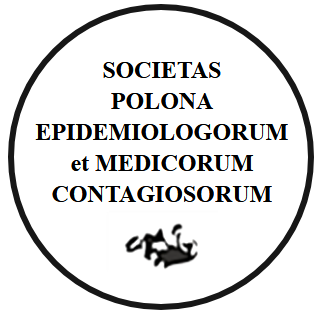RESEARCH PAPER
Trends in Resistance of ESBL-Producing Bacteria Belonging to the Enterobacteriaceae Family in a Polish District Hospital during the COVID-19 Pandemic and Post-Pandemic Period (2017–2023): Analysis of Resistance Changes from a Local Perspective
1
Studenckie Koło Naukowe Mikrobiologii Klinicznej, Uniwersytet Medyczny im. Piastów Śląskich we Wrocławiu, Polska
2
Pracownia Diagnostyki Mikrobiologicznej, Zespół Opieki Zdrowotnej w Oławie, Polska
3
Katedra i Zakład Mikrobiologii, Uniwersytet Medyczny im. Piastów Śląskich we Wrocławiu, Polska
Submission date: 2025-04-03
Final revision date: 2025-05-19
Acceptance date: 2025-05-23
Online publication date: 2025-07-02
Corresponding author
Rafał Kuczma
Studenckie Koło Naukowe Mikrobiologii Klinicznej, Uniwersytet Medyczny im. Piastów Śląskich we Wrocławiu, ul. T. Chałubińskiego 4, 50-368, Wrocław, Polska
Studenckie Koło Naukowe Mikrobiologii Klinicznej, Uniwersytet Medyczny im. Piastów Śląskich we Wrocławiu, ul. T. Chałubińskiego 4, 50-368, Wrocław, Polska
KEYWORDS
TOPICS
ABSTRACT
Background: Antimicrobial resistance is a major public health threat, with extended-spectrum β-lactamase (ESBL)-producing bacteria from the Enterobacteriaceae family classified by the WHO as critical priority pathogens. The COVID-19 pandemic affected global antibiotic consumption patterns, potentially influencing the resistance of ESBL(+) strains and the frequency of bacterial infections in hospitals. Objective: This study aimed to analyze the trends in the prevalence of infections caused by ESBL-producing bacteria (Enterobacteriaceae family) in a district hospital in the Lower Silesian Voivodeship during the peri-pandemic period (2017–2023) and assess the relationship between antibiotic consumption and changes in resistance. Material and methods: A retrospective cohort study was conducted using microbiological and pharmacological data from the Healthcare Complex in Oława. 34,629 clinical specimen cultures from 77,829 hospitalized patients were analyzed. The study focused on Escherichia coli, Klebsiella pneumoniae, and Enterobacter spp. with an ESBL resistance mechanism. The consumption of β-lactam antibiotics from Anatomical Therapeutic Chemical (ATC) Classification System groups J01C and J01D was assessed. Statistical trend and correlation analysis was applied. Results: The incidence of ESBL(+) bacterial infections showed no significant trends. The pre-pandemic prevalence of ESBL(+) strains was low (6.42%–24.49%), rising to 56.25% in 2020 and peaking at 100% in 2021–2022. In 2023, resistant isolates declined to 77.50%. A 50.2% increase in β-lactam antibiotic consumption (J01D, mainly cephalosporins) was recorded in 2020. The highest proportion of ESBL(+) infections occurred in non-surgical wards (40.97%) and long-term care facilities (25.88%). Conclusions: Data analysis from 2017–2023 revealed no significant trends in incidence of ESBL(+) infections but an increase in β-lactam resistance. In 2020, the prevalence of ESBL(+) strains and antibiotic consumption, especially cephalosporins, increased. However, the lack of a significant correlation between antibiotic consumption and resistance suggests that other factors, such as resistant strain transmission or persistent colonization, play a crucial role. These findings highlight the need for enhanced resistance monitoring and rational antibiotic stewardship strategies.
Share
RELATED ARTICLE
We process personal data collected when visiting the website. The function of obtaining information about users and their behavior is carried out by voluntarily entered information in forms and saving cookies in end devices. Data, including cookies, are used to provide services, improve the user experience and to analyze the traffic in accordance with the Privacy policy. Data are also collected and processed by Google Analytics tool (more).
You can change cookies settings in your browser. Restricted use of cookies in the browser configuration may affect some functionalities of the website.
You can change cookies settings in your browser. Restricted use of cookies in the browser configuration may affect some functionalities of the website.





